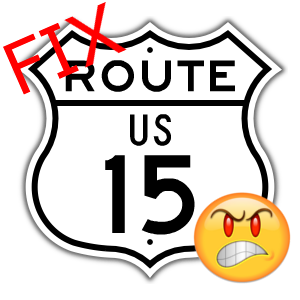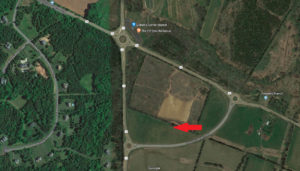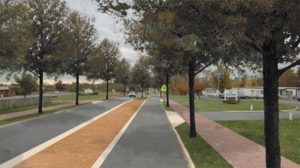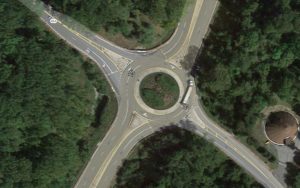Do You Know Who Owns the Point of Rocks Bridge?
Do you know who owns the Point of Rocks Bridge?
The answer may shock you. It also raises potential questions about the competency of our elected officials, County Staff and the consultants who are leading the Route 15 process. The letter below is courtesy of a submission to [email protected]. Please continue to share your feedback with us (and the Fix Route 15 Now community).
Fix Route 15 Now!
Follow us on Facebook
August 31, 2018
Loudoun County
Supervisor Geary Higgins
P.O. Box 7000
Mailstop #01
Leesburg, VA 20177-7000
Supervisor Higgins:
I am writing to you regarding certain facts and characterizations of the Point of Rocks Bridge as it pertains to the Route 15 Stakeholder Group that you oversee. I recently learned the following about the Point of Rocks Bridge:
Ownership– The bridge is jointly owned by the Commonwealth of Virginia and the State of Maryland (“each an undivided one-half interest”).
Maintenance– The maintenance cost of the bridge is shared equally between the Commonwealth of Virginia and State of Maryland (“each shall pay one-half of the cost of repair, operation and maintenance”).
Tolls– Tolls are prohibited except for covering the initial acquisition cost of the bridge (“shall be free of tolls”).
Below is a text version of the 1929 agreement between the Commonwealth of Virginia and State of Maryland covering the acquisition, ownership, maintenance and tolls related to the Point of Rocks Bridge. I have also attached the original agreement.
I have observed multiple Route 15 Stakeholder meetings, Board of Supervisor meetings and public hearings. During these meetings and hearings, I continue to hear people (including one or more Supervisors) suggest putting a toll on the Virginia side of the bridge to discourage Marylanders from coming to Virginia. I have also heard people say the bridge belongs to Maryland or that Maryland would do nothing with their bridge. Did you know that all of these statements are false or misleading? Did you, County Staff, or Kimley-Horn know who owns the bridge, bears the financial responsibility for maintaining the bridge or that there is a prohibition against tolls? Did you find amusement in the fact that Stakeholder Committee members and others wasted time discussing these questions? It would have been helpful if the record was set straight.
I expect that the facts outlined above regarding the Point of Rocks Bridge to be included in the Safety and Operations Study to be presented to the Board of Supervisors in September.
Below is the text from a 1929 Agreement between the Commonwealth of Virginia and State of Maryland to acquire and maintain the bridges at Point of Rocks and Brunswick, Maryland.
______________________________
THIS AGREEMENT, made as of this 22nd, day of July 1929, by and between the COMMONWEALTH OF VIRGINIA, acting by and through the State Highway Commission, of the first part, hereinafter called “Commonwealth”, and the STATE of MARYLAND, acting by and through the State Roads Commission, of the second part, hereinafter called “State”, and the BOARD OF SUPERVISORS OF LOUDOUN COUNTY, Virginia, hereinafter called “County”, of the third part, the Commonwealth and County acting pursuant to authority vested by an Act of the General Assembly of Virginia of 1928, Chapter 516, page 1358, and the State pursuant to authority vested by Act of the General Assembly of Maryland of 1929, Chapter 542.
WITNESSETH:
The parties hereto do hereby covenant and agree as follows:
(1) The Commonwealth and the State do hereby covenant and agree, each with the other, to purchase and acquire prior to December 31, 1929, the interstate highway bridge and approaches , over the Potomac River near Point of Rocks, Maryland, connecting Virginia State Highway Route Two (now known as Route 32), with the Maryland State Highway System, each to pay one-half of the purchase price thereof, the said purchase price not to exceed the sum of One Hundred Thousand ($100,000) Dollars, and each to pay one-half of all necessary expenses hereafter incurred in the purchase of the said property. Title to said bridge and approaches shall be vested jointly in the Commonwealth of Virginia and State of Maryland, in each an undivided one-half interest.
(2) The State and County do hereby covenant and agree, each with the other to purchase and acquire prior to December 31, 1929, the interstate highway bridge and approaches, over the Potomac River, at Brunswick, Maryland, connecting County highway Number Nine with the Maryland State Highway System, a price not to exceed $100,000, and payable as hereafter provided, and each to pay one-half of all necessary expenses hereinafter incurred in the purchase of said property. Title to said bridge and approaches shall be vested jointly in the State of Maryland and the Board of Supervisors of Loudoun County, in each an individual one-half interest.
(3) The Commonwealth, State and County, covenant, and agree that pursuant to arrangements as to details of collection, accounting and disbursements to be made by the State Highway Commission and the State Roads Commission of Maryland, tolls shall be charged for use of each of said bridges and approaches at the same rate of toll in effect March 28, 1928, and that the tolls so collected shall be applied, after the payment of the costs of collection, on the purchase price of the bridge and approaches at Brunswick, Maryland, at a price not to exceed the sum of $100,000 and interest thereon, until such purchase price and interest thereon is fully paid, and that thereafter both of said bridges and approaches shall be free of tolls.
(4) The Commonwealth and State covenant and agree, each with the other, that each shall pay one-half of the cost of repair, operation and maintenance of the bridge and approaches near Point of Rocks, Maryland, and that the details of repairs, operations and maintenance for each year shall be planned in advance by the State Highway Commission of Virginia and State Roads Commission of Maryland.
(5) The State and the County covenant and agree, each with the other, that each shall pay one-half of the cost of repair, operation and maintenance of the bridge and approaches at Brunswick, Maryland, and that the details of repairs, operations and maintenance for each year shall be planned in advance by the County and the State Roads Commission of Maryland.
(6) The Commonwealth, State and County, each covenants and agrees with the other that no effort will at any time be made by either of them, or any sub-division thereof, to levy, assess or collect any tax upon the interest or title of either of the others, or any political sub-division thereof, on either or said bridges and approaches.
IN WITHESS whereof the Commonwealth of Virginia has caused these present to be executed in its name and in its behalf by the State Highway Commission, the State of Maryland by its State Roads Commission and the County of Loudoun, Virginia, by its Board of Supervisors.
COMMONWEALTH OF VIRGINIA
By /signed/
State Highway Commission
STATE OF MARYLAND
By /signed/
State Roads Commission






